| The Enthusiasts' Page | |||
| - YOU ARE NOW ON PAGE 15 | |||
 | All things 'Maserati'. News of forthcoming models, owner's cars, tips, 'Marque' reunions and the odd touch of humour! In fact anything of interest to the 'Maseratista'. |
 |
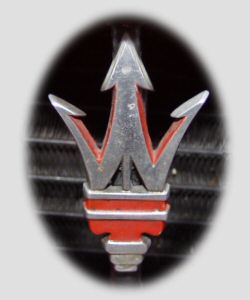 Grille trident on a 1978 Maserati Bora |
| You can click on some pictures for a better view!! | |||
|
|
||
|
You can visit Coys famous showrooms any time you are in London, just call the Sales Department on 0044 (0)20 7584 7444, or send them a fax on 0044 (0)20 7584 2733 or alternatively an e-mail to sales@coys.co.uk |
||
A 1959 Cooper T51 Maserati |
||
As owner of the famous Scuderia Centro-Sud racing team and Maserati concessionaire for Rome, Gugliemo 'Mimo' Dei clearly enjoyed a close relationship with the Maserati factory. As a result of this friendship, Dei was able to purchase racing engines from the Maserati factory to fit into proprietry chassis to enable him to enter Maserati engined cars into Grand Prix events long after the Maserati factory ceased to produce complete cars for single seater events. |
||
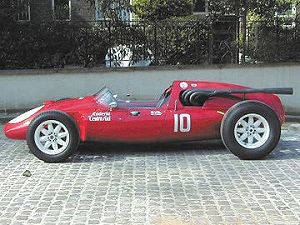 Photo courtesy of Coys |
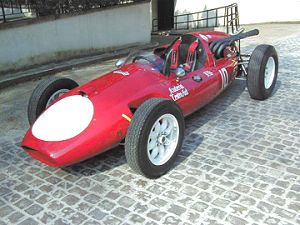 Photo courtesy of Coys |
|
By the late 1950's the writing was on the wall for front engined cars in single seater events, with Cooper and Lotus showing the more traditional Italian constructors the potential of the new layout. Whilst the ever traditional Enzo Ferrari resisted the trend, Dei realised that the Future could not be denied and ordered two Type 51 chassis from Coopers of Surbiton in early 1959 as well as a Cooper Monaco sports car, all to be delivered to Italy less engines, where his mechanics could fit 2.5 litre Maserati engines allowing the cars to compete in Grand Prix events. |
||
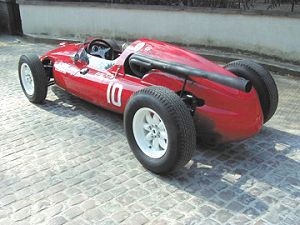 Photo courtesy of Coys |
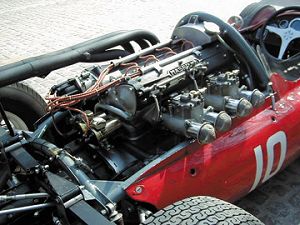 Photo courtesy of Coys |
|
Envisaged as a Formula II car, the T51 was equally suited to the larger capacity power plants, and proved to be one of the most successful designs produced by the South London 'Garagistes' (as Enzo Ferrari famously dubbed both Cooper and Lotus, the new forward thinking English manufacturers). In 1959 Jack Brabham, driver, engineer and mechanic for the Cooper team secured the first ever championship for a mid engined car, and the first of his two consecutive world titles for Cooper. The following year he would drive a 'Lowline' Cooper, but in '59 he secured the title in a Coventry Climax FPF powered T51. |
||
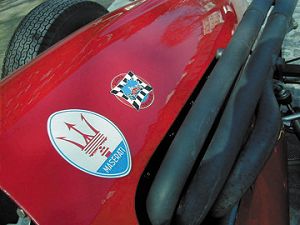 Photo courtesy of Coys |
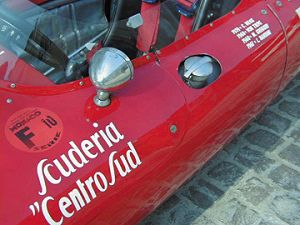 Photo courtesy of Coys |
|
Having been a regular feature in historic events in recent years, chassis 12 has been prepared and maintained in recent times by Paul Lanzante to the highest standards, including the 2.5 Litre four cylinder, eight plug Maserati engine. Finished in it's period livery of Italian racing red and bearing the name 'Scuderia Centro Sud' on each flank, chassis 12 remains as striking as it did on it's first outing. The car is fitted with white 'rose petal' style alloys, a style famously designed by Coopers eccentric inhouse designer Owen Maddock. |
||
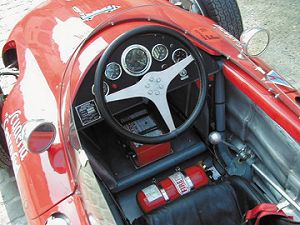 Photo courtesy of Coys |
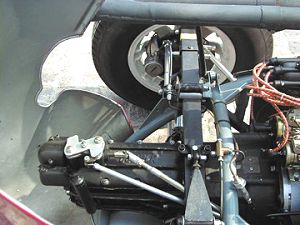 Photo courtesy of Coys |
|
The car has been raced extensively throughout Europe, including the Monaco Historic Grand Prix 2002 and remains one of the most charismatic and popular cars of it's era, and is regularly to be seen competing against the greatest cars of the time. The golden age of the transition from front to mid engine configuration when these Coopers re wrote the rule book of racing design and confined such greats as the 250F to the history books. As a result of this fascinating transition, this era of racing remains one of the most fascinating and enjoyable for both drivers and spectators alike, and chassis 12 represents an excellent and competitive race ready entry into some of the most prestigious events on the calendar. |
||
1937 Maserati 6CM Ex Works Bianco/ Marazza |
||
The cars produced by the Maserati Brothers remain some of the most evocative and revered of both the pre and post war period. Over the years Maseratis have carried engines of 4, 6, 8, and 16 cylinders in both straight and V configuration, and been used in both single seater and sports cars chassis with equal success. |
||
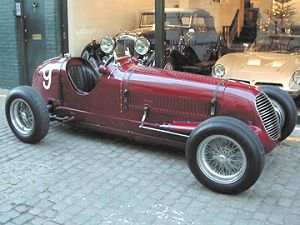 Photo courtesy of Coys |
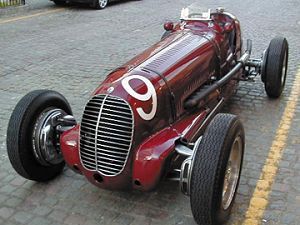 Photo courtesy of Coys |
|
The 6CM was one of their most successfull pre war designs, and as a result almost 30 were built over a three year period. It's 175bhp six cylinder engine propelled it's 650kg chassis to speeds in the region of 140mph, and the chassis featured torsion bar independent front suspension and a semi eliptic sprung rear axle, later cars featuring quarter eliptic springs.
|
||
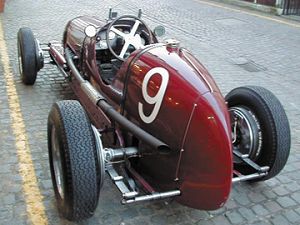 Photo courtesy of Coys |
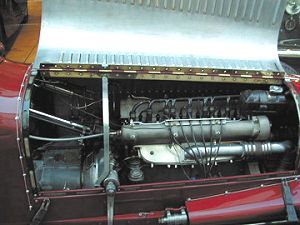 Photo courtesy of Coys |
|
Many of the cars produced were sold to wealthy privateer entrants including Austin Dobson, the Englishman buying three cars, whilst Lord Howe and Johnny Wakefield both purchased cars as well. Several teams such as Scuderia Ambrosiana and Ecurie Helvetica also ran 6CMs, many of the greatest of the pre war drivers securing victories and places in the car. As well as strong results in Voiturette races, one even contested the 1938 Indianapolis 500. |
||
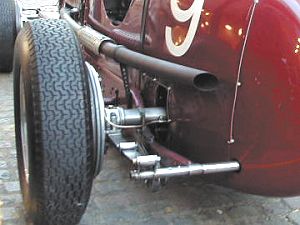 Photo courtesy of Coys |
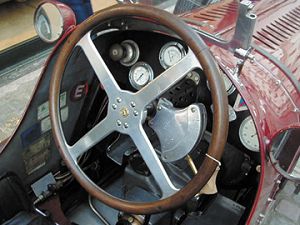 Photo courtesy of Coys |
|
When the twin supercharged 4CL superceded the 6CM as the Factory team cars, chassis 1543 passed, like the other ex works cars, to private entrants who continued to campaign the cars. |
||
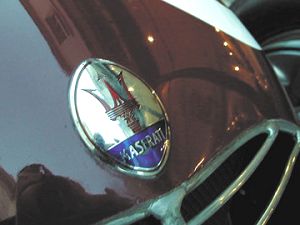 Photo courtesy of Coys |
 Photo courtesy of Coys |
|
Most recently this immaculately prepared and race ready voiturete has formed part of a renowned international collection, and has been raced at many of the worlds leading historic events. With a fascinating history as part of the works team, and having been raced by several well known historic racing drivers, chassis 1543 remains one of the most rewarding and capable pre war cars to drive, as well as providing an excellent entry into some of the worlds most prestigious events. |
||
1936 Maserati 6CM-Ex Count Trossi |
||
The 1500cc Monoposto racing of the mid 1930's was one of the most exciting periods of racing in the history of the sport. these small engined, upright single seaters with supercharged engines running on methanol were at the forefront of racing technology and offered the spectacle of close and spectacular racing between factory teams and wealthy individuals throughout Europe. |
||
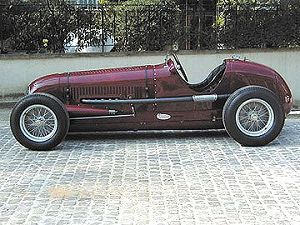 Photo courtesy of Coys |
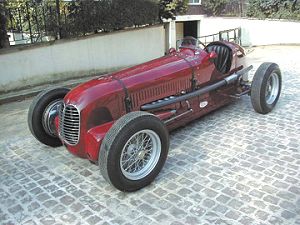 Photo courtesy of Coys |
|
The formula was primarily contested by Italians and Brits, with the German state backed teams focussed on the larger engined formulas where they fought Alfa Romeo for dominance in Grand Prix events and international prestige. |
||
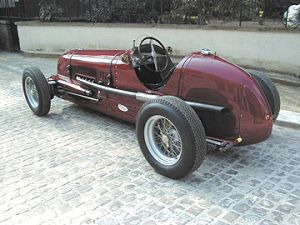 Photo courtesy of Coys |
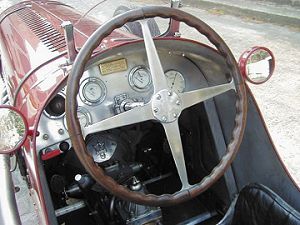 Photo courtesy of Coys |
|
The British drivers generally favoured Raymond Mays Riley based ERA's, with many 'society' figures and 'Bentley boys' progressing to drive these formidable British cars at home and abroad, with some of the closest racing taking place at Brooklands in Surrey. |
||
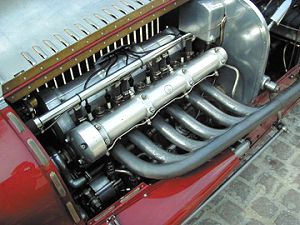 Photo courtesy of Coys |
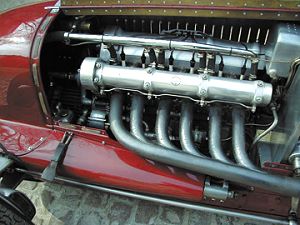 Photo courtesy of Coys |
|
Driving chassis 1532 Didi showed his considerable skills throughout the season, in five outings in the car he won four times, and settling for second at Pescara. Perhaps the most rewarding victory came in front of the 'home crowd' at Modena in September. |
||
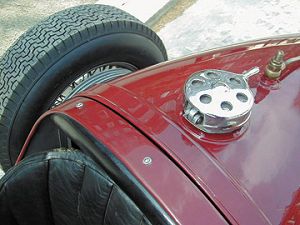 Photo courtesy of Coys |
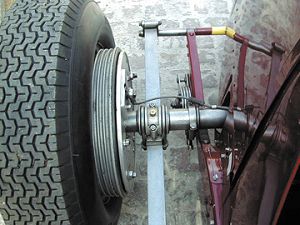 Photo courtesy of Coys |
|
Once the restoration was completed, chassis 1532 passed into the collection of Irvine Laidlaw in the mid 1990's. Well known in racing circles for his varied collection and determined style. Mr Laidlaw enjoyed the car for several seasons, entrusting it's maintenance to noted Marque expert Sean Danaher, in whos hands the car has continued to be maintained in the highest condition during it's subsequent owners possesion. |
||
|
|
|
| MORE FOR THE ENTHUSIAST | |
 |
||
|
To enter Enrico's Maserati Pages CLICK HERE! Copyright: Enrico's Maserati Pages - © 2000-2004. All rights reserved. |